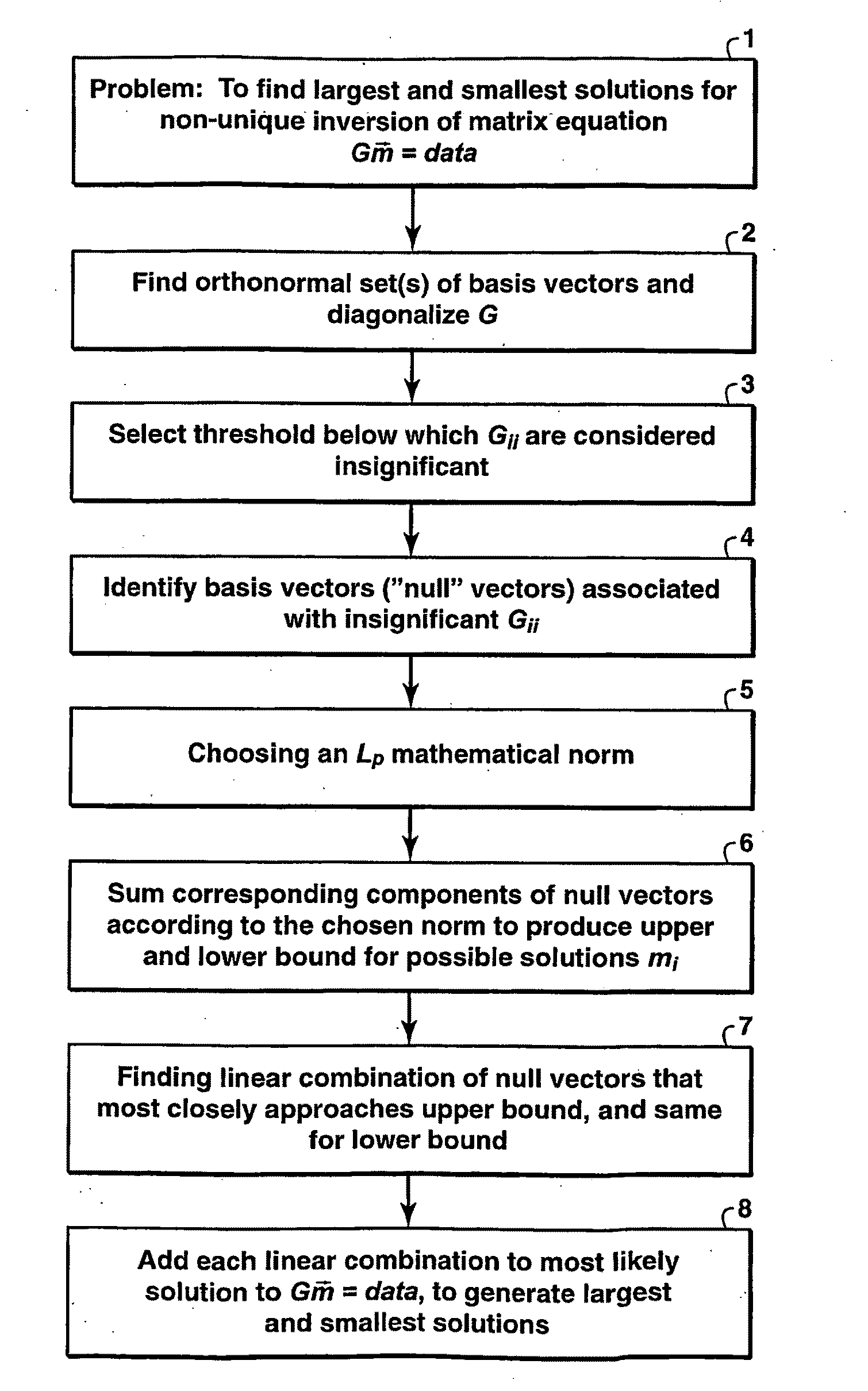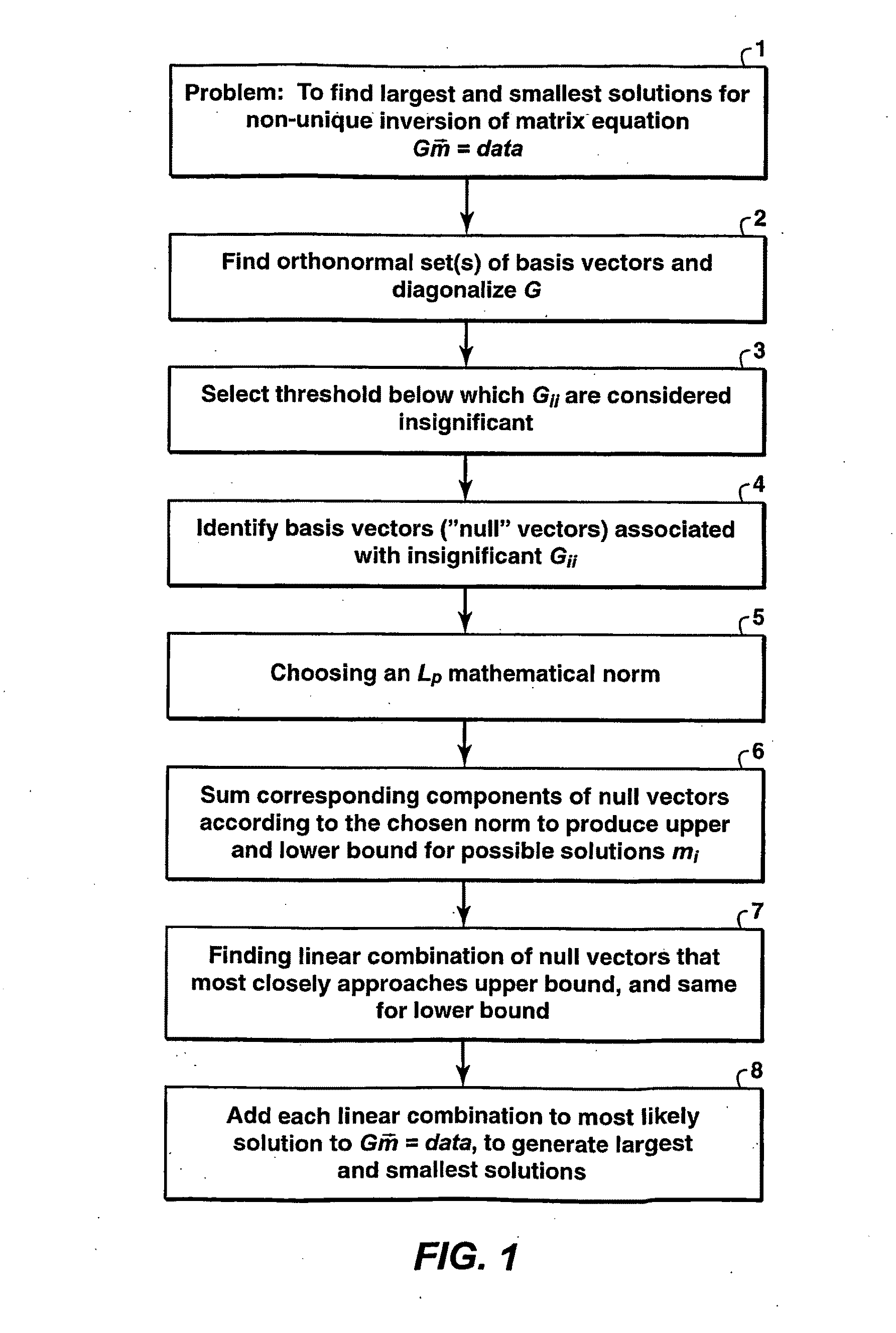Method for Predicting the Best and Worst in a Set of Non-Unique Solutions
a non-unique solution and solution technology, applied in the field of geophysical modeling, can solve the problems of time-consuming methods, generally not matching the observed data in a forward modeling sense, and not necessarily the “best” and “worst” case answers
- Summary
- Abstract
- Description
- Claims
- Application Information
AI Technical Summary
Benefits of technology
Problems solved by technology
Method used
Image
Examples
example
[0021]The present inventive method was applied to some seismic data acquired over a potential oil field. FIGS. 2A-C show a 3-D image on a black background of, respectively, the “worst,”“most-likely,” and “best” inferred (1—vshale) sand channel winding through a inverted vshale volume (the shaly parts have been made invisible). The estimates of total reserves carried in the “best” and “worst” case scenarios varies by almost a factor of two. In addition, the difference in connectedness between the sand bodies in the “worst” and “best” cases are significantly different and imply different draining strategies that might be optimal for this field.
PUM
 Login to View More
Login to View More Abstract
Description
Claims
Application Information
 Login to View More
Login to View More - R&D
- Intellectual Property
- Life Sciences
- Materials
- Tech Scout
- Unparalleled Data Quality
- Higher Quality Content
- 60% Fewer Hallucinations
Browse by: Latest US Patents, China's latest patents, Technical Efficacy Thesaurus, Application Domain, Technology Topic, Popular Technical Reports.
© 2025 PatSnap. All rights reserved.Legal|Privacy policy|Modern Slavery Act Transparency Statement|Sitemap|About US| Contact US: help@patsnap.com



